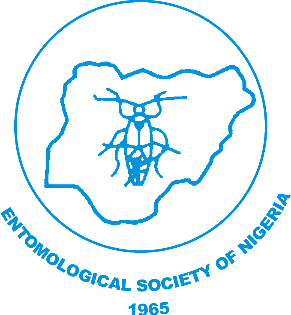
Diversity of Wasp (Hymenoptera) in Obafemi Awolowo University, Ile-Ife, Osun State, Nigeria
NJE Vol. 40: 90-99, 2024
DOI.10.36108/NJE/4202/04.0170
Oyelade O.J* and Akintoye A.C.
Natural History Museum, Obafemi Awolowo University, Ile-Ife, Nigeria
Abstract
The inventory of wasp species and distribution within Obafemi Awolowo University (O. A. U.), Ile-Ife campus was investigated with the view of updating the checklist of the insect species found in the habitats. The research was carried out between the month of May 2021 and April 2022. Wasp’s species were collected from six selected habitats on the campus using active/direct method of collection which involves the use of sweep net and indirect/passive method of setting of traps with baits. The collected wasp specimens were pinned, dried in an automated oven at the Museum of Natural History, O. A. U., Ile-Ife then stored in insect boxes containing naphthalene flakes (camphor). Identification was made using identification keys for Afrotropical Hymenoptera. Data collected were analyzed using descriptive (tables) and inferential statistics. Paleontological Statistics (PAST) (version 16) was used for analysis of wasps Diversity Indices with level of significant (p=0.05). Twenty eight species of wasps were collected which belongs to six Families from the selected habitats, comprising of Families Crabronidae, Evaniidae, Ichneumonidae, Pompilidae, Sphecidae, Vespidae. Opa Reservoir habitats have the most diverse of the species with eleven (11) species (Shannon index of 1.464) while the hills have the least (1) (Shannon index of 0). The Family Vespidae has the highest numbers of genera (13) while the genus Belonogaster has the highest numbers of species (3). There are many more wasp species yet to be discovered in Nigeria as some wasp species are predatory in nature; some are pollinator of flowers, some do lay their eggs in the nest of other wasps, while most of the solitary wasps are parasitic in nature and feed on almost every pest, an attribute qualifying them as good bio-control agents (O’Neill and Kevin. 2001).
Keywords: Family, description, habitat, species
